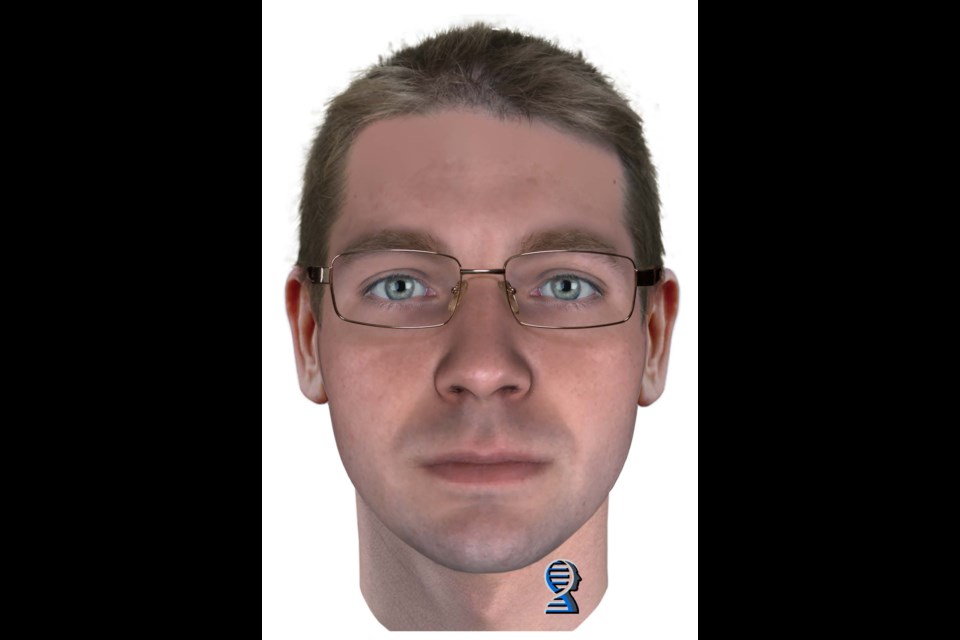Greater Sudbury Police have turned to a American DNA technology firm to produce a new composite sketch and genetic profile of the suspect in the Reneé Sweeney murder case.
On Jan. 27, 1998, Sweeney, a 23-year-old Laurentian University student, was stabbed to death while working at Adults Only Video in Sudbury. The case remains unsolved.
As the 19th anniversary of Sweeney's murder approaches, police held a press conference Monday morning, where they unveiled the new composite image.
Using DNA collected at the murder scene, the composite image was produced by Parabon NanoLabs, a DNA technology company in Virginia, with its Snapshot DNA Phenotyping Service.
Steven Armentrout, president of Parabon NanoLabs, explained via videochat that Snapshot is the first software application in the world that can predict appearance and ancestry from DNA samples.
“It's an investigative tool to allow police to operate more efficiently,” he said, adding that police can narrow suspect lists by eliminating people whose appearance and ancestry is inconsistent with the Snapshot analysis.
From there, police can use traditional DNA analysis and other investigative techniques to make arrests.
In some cases, the technology — which has been available to police for two years — has led to breaks in cases.
Armentrout said he wants to emphasize the composites produced by Snapshot “are not photo IDs,” as appearance is greatly affected by things like hairstyle, lifestyle, weight and age.
The technology is only able to provide composites with a default age of 25 and BMI of 22 (normal weight), because these attributes can't be predicted by DNA.
“It's with additional information that we might make adjustments,” he said.
The Sweeney murder suspect composite shows that the suspect is a male of Northern European ancestry, with fair skin, blue/green eyes, brown/blond hair and few freckles.
Eye glasses were added to the composite based on the description of eyewitnesses.
Because the composite shows what the suspect may have looked like at age 25 — he was actually estimated by eyewitnesses to be in his early 20s at the time of the murder — he could have changed significantly in appearance by now.
But Greater Sudbury Police Chief Paul Pedersen said police are hoping the composite image jogs someone's memory about a person they knew or something they saw back in January 1998.
“What we're looking for is a name, and from that name, we'll use investigative techniques to lead us in a direction to find that person's DNA,” he said.
Police say they'll never give up on trying to solve Sweeney's murder — they've always had an investigator assigned to the case.
To date, more than 1,800 people of interest have been eliminated as suspects. The DNA collected at the scene has never been matched to anyone in the available DNA databases.
Det. Sgt. Robert Weston, who's been assigned the case for the past four years, said he met with one of Sweeney's family members over the weekend to update them on how the Snapshot technology was used to produce a new composite image.
“This person was extremely pleased with the efforts made, and looking forward to this new, innovative technique, and its results,” he said.
Police say they hope more tips will come in from the public as a result of the release of the new composite image.
Citizens with new information regarding the incident or the suspect are urged to contact the Greater Sudbury Police Tip Line at 705-675-9171, ext. 2320. Citizens can also provide information anonymously through Sudbury Rainbow Crime Stoppers at 705-222-TIPS (8477).



